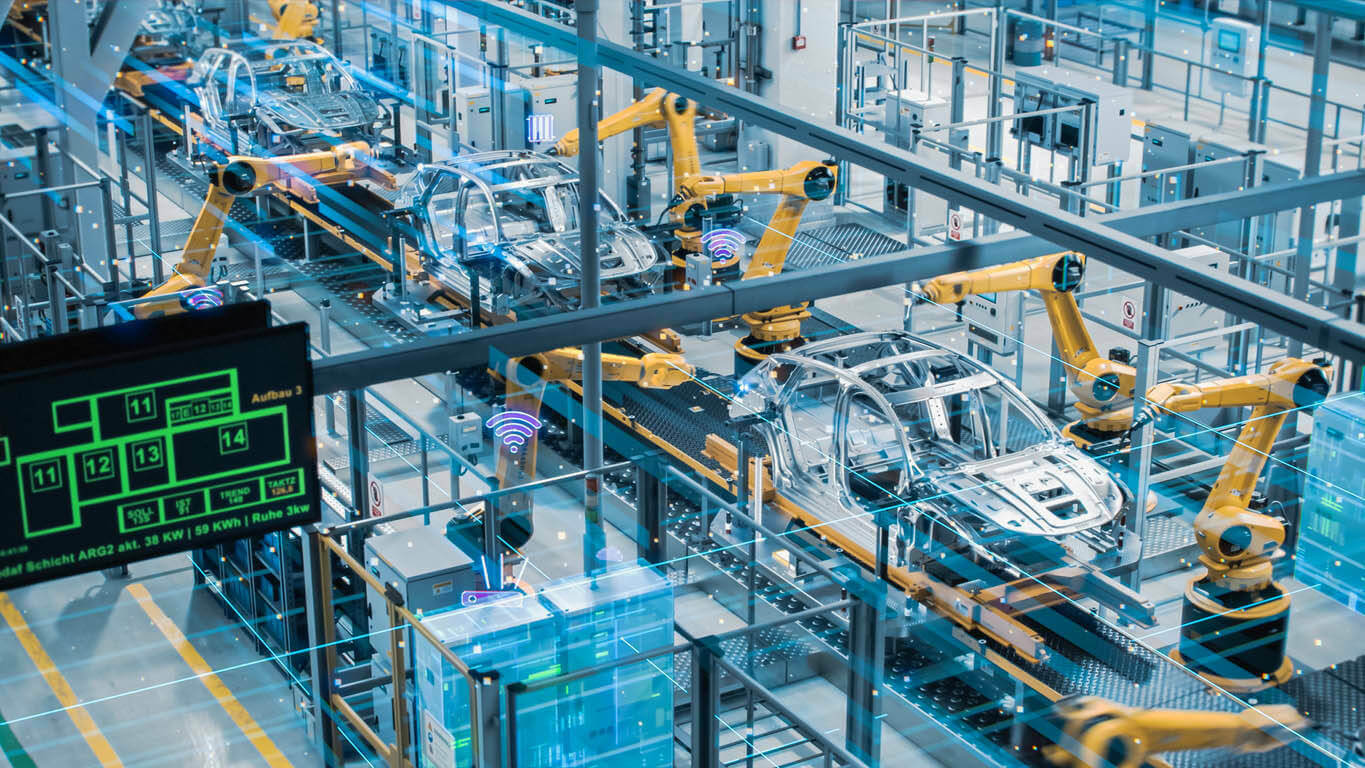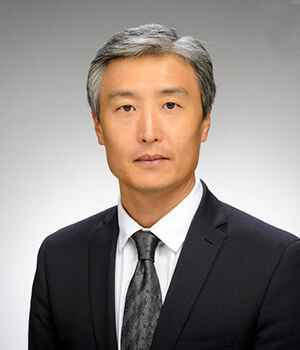Will a robot take my job? Notre Dame researcher says this view is overly pessimistic

With the impact of industrial robots on the U.S. labor markets in the past two decades, and an ever-increasing presence of machine-driven technology (such as artificial intelligence and ChatGPT), many employees have feared that one day robots will take their jobs.
Not necessarily so, according to research recently published by Yong Suk Lee, an assistant professor in the University of Notre Dame’s Keough School of Global Affairs. He and his co-author, Auburn University’s John Chung, found that industrial robots, particularly those used within the automotive industry, complemented human workers rather than replaced them — some even working collaboratively, side-by-side. Not only that, but the advanced digitization and automation of that industry likely increased labor productivity and created new tasks, requiring the hiring of more employees. In some cases, robot technology may have supplemented the workforce by filling in gaps that were left vacant when employees quit or moved on to other positions.

The study’s authors examined the influence of robots on the U.S. labor market between 2005 and 2016, analyzing the data in five-year intervals. For the first five years, robots did have a negative impact on the number of human employees and their local wages, but that impact rebounded and turned positive in more recent years, beginning around 2010.
Comparing data from the U.S. Bureau of Labor Statistics, the Organization for Economic Cooperation and Development and the International Federation of Robotics, the researchers were able to track that reversal and determine its source. Productivity could have increased due to three factors, they wrote: the automation of tasks and a reduction in production costs, the improvements of robot technology performing the same tasks, and the creation of new tasks spurred by those automation technologies and abilities.
Productivity gains from task automation occur when robots are able to perform certain tasks better or faster than humans, the researchers wrote, providing a cost savings. Second, newer models of robots that work faster and more accurately than older models can also increase productivity, without displacing workers. Many of these new automation tasks require human workers to operate and manage them, however, especially as they become more complex, which increases the demand for laborers.
There has also been a recent shift in how robots are being used and what they are doing, Lee said. “When robots were initially introduced, the intent was to cut costs and replace human workers. But now companies are using ‘collaborative robots’ or ‘cobots,’ which are designed to work together with humans.”
Lee explained that in the automobile industry, for example, industrial robots were set up in a production line and human workers had to be kept separate from the machines due to the danger of proximity with large, moving parts. “But now the industry trend is to create a smaller robot that’s more agile and soft,” Lee said, “so that if it bumps into its collaborative human partner at all, it will just stop. It interacts more, making it a much safer environment.
“When robots were initially introduced, the intent was to cut costs and replace human workers. But now companies are using ‘collaborative robots’ or ‘cobots,’ which are designed to work together with humans.”
“This new collaborative environment implies that the goal of robots is not necessarily to replace human beings, but to actually augment them.”
The implications for labor workers will be different now that the robots can potentially make them more productive, rather than laying them off, Lee said. “New and advanced robot technology is more sophisticated in that they can be programmed to do multiple tasks. If you think of artificial intelligence or specialized software being incorporated into the robot technology, then the robots can ‘learn’ and adjust to the environment.”
When companies learn to harness robotic technology, they can efficiently produce their goods and exceed production targets, and eventually take on more work or begin new projects, Lee explained. “As a company adopts new technologies, sometimes new tasks are created that we didn’t even know existed before but that are now being initiated.”
But along with that new technology and those new tasks, Lee said, human experts still need to be hired to design, develop and manage those capabilities. “Our findings pointed to the automotive sector in the U.S., which is the largest adopter of robotics, and we see this transitioning of what an automobile is, what the industry is (i.e., electric vehicles). I think that will create a different type of demand for tasks, skills and workers. Robots can not only help existing workers, but can help recruit new, specialized workers in that domain as the technology evolves.”
The other side to that coin is that there’s a constant shortage of manufacturing workers, Lee added. “The demand for robots is changing as we need to augment labor to fill in those gaps where there is a shortage of employees.”
The researchers also found evidence of spillover effects on other supporting industries within and outside of the specific manufacturing sector. Relying on commuting zones as their parameters of influence, they saw a boost in the service sectors within that local economy. “We found growth in the professional services like accountants, lawyers, etc., for example, but also in retail, food and other services,” Lee said.
“Humans are the ones creating these new technologies and adopting them — and their intentions actually matter. I think technology will become a larger factor in either the inequality or well-being of human laborers in the future.”
Regarding the quickly evolving artificial intelligence and ChatGPT technologies, Lee suggested we learn to harness these revolutionary capabilities rather than fear them. “They could create new opportunities that we haven’t yet seen or thought of,” Lee theorized. “And then there may be fresh demands for completely new jobs and new employees.”
The researchers concluded that the impact of robot technology on jobs will continue to evolve, and that further research will be able to shed light on how and where those impacts will occur, as well as on how robots and human labor may interact.
“Humans are the ones creating these new technologies and adopting them — and their intentions actually matter,” Lee said. “I think technology will become a larger factor in either the inequality or well-being of human laborers in the future.”
Contact: Tracy DeStazio, assistant director of media relations, 574-631-9958 or tdestazi@nd.edu
Latest Faculty & Staff
- Faculty receive prestigious early career awards from National Science FoundationDuring the 2024-25 academic year, four researchers in the University of Notre Dame’s Colleges of Engineering and Science received early-career awards from the National Science Foundation.
- In new research, Roy Scranton explores climate change and the limits of human progressIn his most recent book, “Impasse: Climate Change and the Limits of Progress,” Scranton, an associate professor of English, defines the impasse he sees as “not only political and institutional, but cognitive, existential and narrative” and asserts that the only path forward is through embracing what he terms ethical pessimism. “A lot of people confuse pessimism with nihilism, apathy and despair,” Scranton said. “But pessimism is actually about recognizing our limits, letting go of unrealistic goals, finding solidarity in the fact of human suffering and doing what you can now, not in some utopian future.
- Joule Bergerson, energy technology assessment expert, named new director of ND EnergyND Energy faculty director Joule…
- In memoriam: Alasdair MacIntyre, the Rev. John A. O’Brien senior research professor of philosophy emeritusAlasdair MacIntyre, the Rev. John A. O’Brien senior research professor of philosophy emeritus and a permanent senior distinguished research fellow at the de Nicola Center for Ethics and Culture, died on May 21, 2025. He was 96.
- Santiago Schnell, dean of Notre Dame’s College of Science, appointed as provost of DartmouthSantiago Schnell, the William K. Warren Foundation Dean of the College of Science at the University of Notre Dame, has accepted an appointment as provost at Dartmouth College. He will depart Notre Dame at the end of June and begin his new role in July.
- Notre Dame’s Fightin’ Irish Battalion receives Department of Defense award as nation’s top Army ROTC programThe United States Department of Defense honored the University of Notre Dame’s Army ROTC Fightin’ Irish Battalion as the nation’s top Army collegiate program for the 2023-24 academic year. This will be the first time the unit has received the department’s Educational Institution Partnership Excellence Award, which recognizes the program’s achievements in recruiting, educating, training and commissioning leaders of character to be the next generation of military officers.












